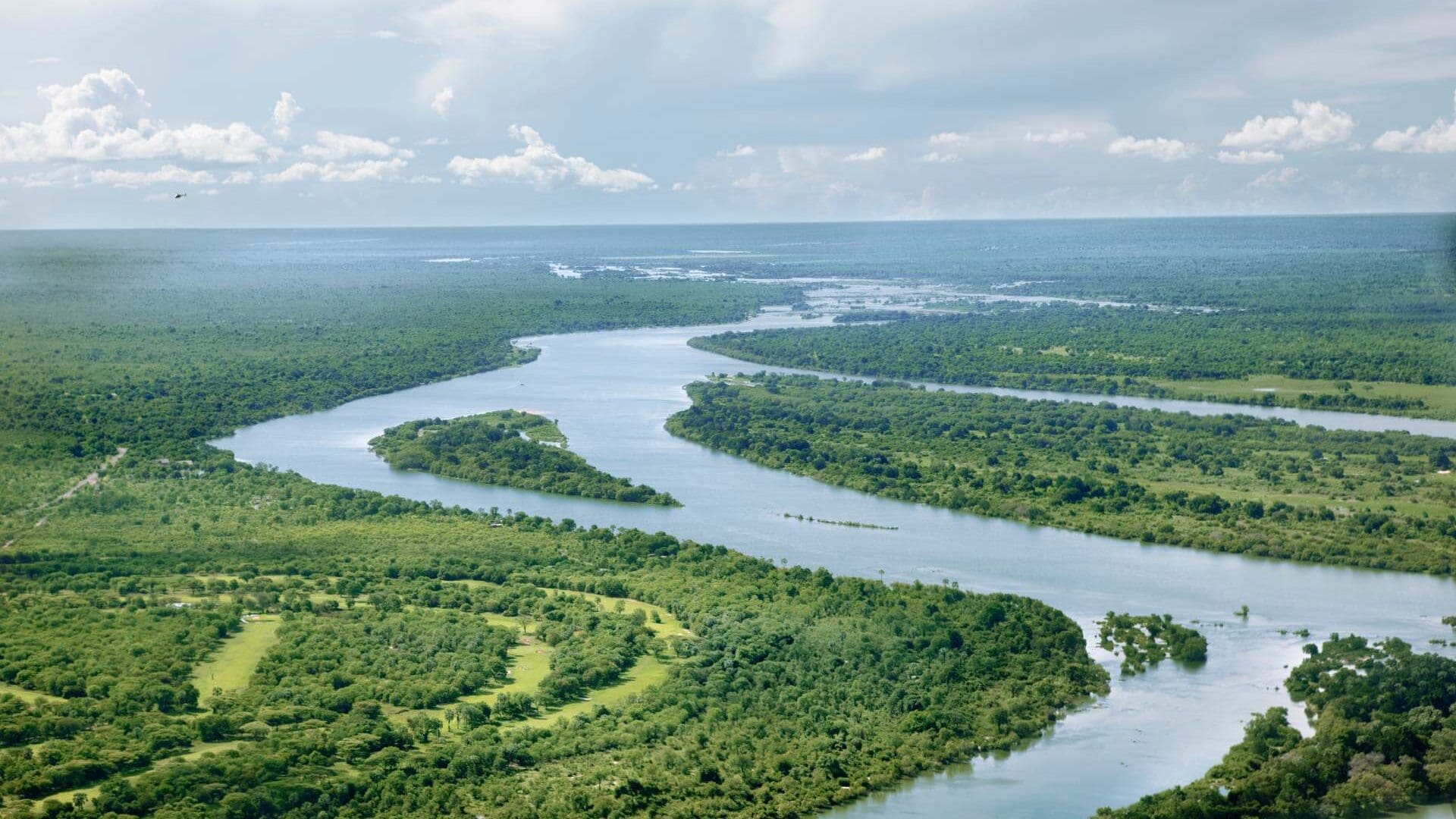Western Zambia is a hidden paradise of natural beauty, offering exclusivity and adventure for luxury travellers. Two rivers flow through this land: the Zambezi and the Kafue. Heavy rains from November to January cause the rivers to flood the surrounding grasslands, creating extensive floodplains. This is also the site of an ancient ceremony held annually by the local Malozi people.
Must-Visit Areas in Western Zambia
This region in Zambia offers excellent tiger fishing opportunities as well as the chance to see the second-largest wildebeest migration in Africa:
Barotse Floodplain: Perfect for Anglers
The Barotse Floodplain, one of the continent’s great wetlands, is a paradise for anglers. This floodplain offers excellent tiger and bream fishing. The region floods during the rainy summer season, creating breeding grounds for vast quantities of baitfish. The baitfish wash into the main channels, attracting large tiger fish and bream, creating ideal fishing conditions.
Liuwa Plain National Park: Wildebeest Migration
This national park is renowned for its vast grasslands and the second-largest wildebeest migration in Africa. It’s located in Zambia’s remote west region on the floodplains of the upper Zambezi Basin. Liuwa receives annual flood waters, creating islands to explore. During a Zambia safari here, you’ll be in awe of the sheer amount of herbivores that traverse the plains with a growing population of predators hot on their tracks.
When’s the Best Time to Visit Western Zambia?
Anglers hoping to catch large tigerfish should plan their Zambia safari for the dry winter months, from May to August. This is an excellent time of year to catch the enormous tigerfish and bream.
The onset of the rains in November sees the wildebeest arrive at the park during their migration. The wet season (November to April) is ideal for wildlife safaris, although it’s best to visit between November and mid-December, as game-drive tracks deteriorate later in the season. The scenery is also lush, and migratory birds are present. May and June, in the dry season, still offer good wildlife viewing opportunities with resident animals present.
For a cultural experience, visit during the Kuomboka ceremony. This festive event is celebrated each year at the end of the rainy season, normally between March and April. The ancient ceremony celebrates the move of the Litunga (King/Paramount Chief of the Malozi people) from his home at Lealui in the flooded villages of the Barotse Floodplain to his home in Limulunga on the higher ground.
Animals Found in Western Zambia
The fertile grasslands provide a spectacular environment for herbivores. While on a Zambia safari, you can spot wildebeests, zebras, tsessebes, oribis, and steenboks. Barotse is also home to the semiaquatic lechwe. Lions have been reintroduced to Liuwa National Park, and the cheetah population is recovering, so you may see these big cats. There’s a strong hyena population, with over 350 of these laughing predators.
If you’re a birder, you’ll be kept busy with over 300 species of birds, including waterbirds, raptors, fly-catchers, and bee-eaters. Notable species include the black heron, squacco heron, African openbill stork, Madagascar pond heron, rufous-bellied heron, African skimmer, and pied kingfisher.
How to Get to Western Zambia
You can fly into Western Zambia, landing at Lukulu Airstrip. From there, you’ll get a road transfer to the national park and conservation zones.
























